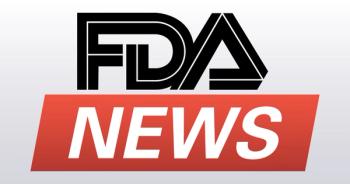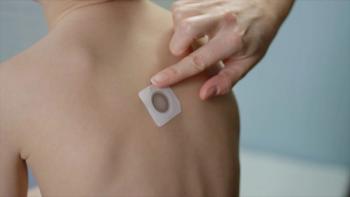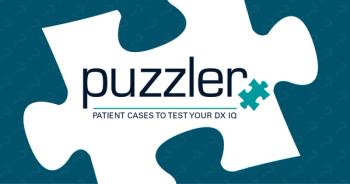
Constructing a complete picture of a fussy infant
A 9-month-old Caucasian boy has been undergoing an evaluation for fussiness and vomiting.
Key Points
The Case
You meet your new patient early one morning on the general pediatric service of your tertiary care hospital. He is a 9-month-old Caucasian boy who has been undergoing an evaluation for fussiness and vomiting.
You familiarize yourself with what has been a difficult week for the patient and his parents. He had been in generally good health until 5 days ago, when he seemed fussier than normal to his parents. They noted decreased oral intake without vomiting or diarrhea. He was still wetting his diapers at a normal rate and had no change in his stooling pattern. He was afebrile and had no known sick contacts.
Over the next 2 days, he began drawing up his legs toward his abdomen. These episodes initially lasted a few seconds but later increased in duration and frequency. He continued to feed poorly, taking only a few ounces of formula on the day he presented to a community hospital emergency department (ED). He had 2 episodes of nonbilious, nonbloody emesis with a decreased number of wet diapers that day.
He is transferred to your facility from the outside hospital ED for further evaluation.
Drawing up his legs
The patient's past medical history is significant in that he was 32 weeks premature and spent 10 days in the neonatal intensive care unit (NICU) primarily for nutritional support. He was not intubated and did not require respiratory support. He did not have evidence of chronic lung disease, necrotizing enterocolitis, intraventricular hemorrhage, retinopathy of prematurity, or any other significant conditions related to his prematurity. He now is being treated for gastroesophageal reflux, for which his feeds are thickened. He has no surgical history.
The patient is developmentally appropriate. He began taking his first steps on the days immediately preceding presentation. He is up to date with his immunizations.
His family history is significant for a maternal history of seizures after traumatic brain injury; the seizures are well controlled with medication.
The patient is not taking any medications on a regular basis and has not taken any medications other than the benzocaine and ibuprofen. He has no known drug allergies.
On physical examination, you observe that the baby is fussy and difficult to console. He is afebrile, and his pulse is 138 beats per minute. His blood pressure is 128/72 mmHg while he is crying. His weight is 8.7 kg (between the 10th and 25th percentile for age), and his length is 66 cm (10th percentile for age). His respiratory rate is 20 breaths/min. His growth has been consistent over time. His head circumference was not measured initially.
The initial examination is fairly unremarkable, with the abdominal exam being the exception. The infant's head is normocephalic and atraumatic, his anterior fontanelle remains open and is flat, and his posterior fontanelle is closed. His pupils are equal, round, and reactive to light, and he tracks in all directions. His tympanic membranes are mildly injected bilaterally but are otherwise normal in appearance. His mucous membranes are moist, and there are not erupting teeth visible. His neck is supple with shotty anterior cervical lymphadenopathy. His lungs are clear to auscultation bilaterally. His heart rate is regular without evidence of a murmur. His abdomen is tense and slightly distended, although he has good bowel sounds and no rigidity. He has no hepatosplenomegaly. At times throughout your exam, he brings his legs up to his chest and cries out. He has a palpable fullness in his right lower quadrant that does not appear to be painful to palpation. His testes are descended bilaterally and he is circumcised. His rectal exam shows normal tone and no stool in the rectal vault. His stool is negative for occult blood. He has strong distal pulses. He has no evidence of a rash or other skin lesions. His neurologic exam shows normal tone, symmetric deep tendon reflexes, and symmetric movement of all 4 extremities.
Laboratory results on admission are obtained from the outside hospital. His basic metabolic panel shows a sodium level of 141 mmol/L, a potassium level of 4.5 mmol/L, a chloride level of 106 mmol/L, and bicarbonate level of 22 mmol/L. BUN, creatinine, and glucose levels are all within normal limits. His white blood cell count is 9.7 x 103 /mcL with 27% neutrophils, no bands, 65% lymphocytes, and 7% monocytes. His hemoglobin level is 13.3 g/dL, and his hematocrit is 39%. His platelet count is also normal at 356 x 103 /mcL.
An abdominal x-ray obtained at the outside hospital shows stool throughout the colon and in the rectum with no air-fluid levels and no evidence of perforation. Chest x-ray is also normal.
Newsletter
Access practical, evidence-based guidance to support better care for our youngest patients. Join our email list for the latest clinical updates.







